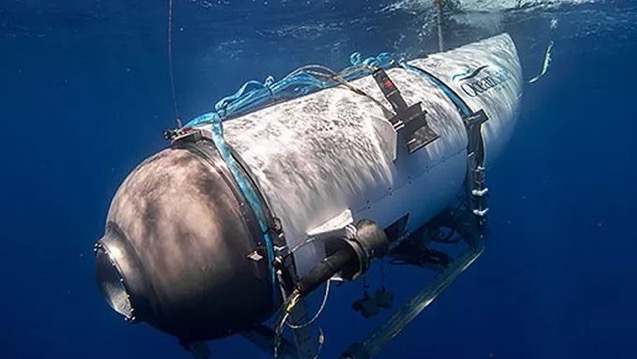As officials search for a missing civilian submersible in the North Atlantic, many wonder: How is a submersible different from a submarine?
Also read | Logitech controller cost: 2010 Gamepad sells out after report of Titanic submersible using it for steering
As search and rescue efforts intensify in the North Atlantic, officials are frantically searching for a missing civilian submersible that had five people on board. The vessel embarked on a voyage to explore the wreckage of the Titanic but disappeared on Sunday, sparking a race against time to locate it and ensure the safety of its occupants.
Distinctions between a submersible and a submarine are crucial to understanding the nature of this rescue mission. While both are designed to operate underwater, they differ in purpose, design, and functionality.
A submersible is a small, typically unpowered, and uncrewed vehicle that is capable of descending and ascending underwater. It is often used for scientific exploration, research, or commercial purposes. Submersibles are typically attached to a support vessel and controlled remotely from the surface. They are not equipped with the advanced systems and extensive life support capabilities found in submarines.
On the other hand, submarines are self-propelled vessels with the ability to operate underwater for extended periods. They are typically crewed and designed for military purposes, including combat, surveillance, and transportation. Submarines have advanced propulsion systems, navigation equipment, and various offensive and defensive mechanisms.
Also read | Did missing OceanGate submersible implode at 10,000 feet en route to Titanic wreckage?
In the case of the missing civilian submersible in the North Atlantic, the 21-foot vessel was on a mission to explore the wreckage of the Titanic. It carried one pilot and four “mission specialists,” according to Rear Adm. John Mauger of the US Coast Guard. Submersibles like this are generally not designed for extended stays underwater and often rely on a support vessel for power and other essential resources.
Authorities are facing a race against time, considering that the submersible has only four days of emergency capability. Search and rescue teams, including crews from the US and Canadian coast guards, are tirelessly scouring the ocean’s surface and using sonar technology to listen for any signs of the missing submersible.
As the search continues and efforts are made to establish contact with the families of those on board, the urgency to locate the submersible and ensure the safety of its occupants remains a top priority. The distinct characteristics of a submersible and its limited capabilities reinforce the need for swift action and effective coordination among search and rescue teams in the challenging depths of the North Atlantic.







